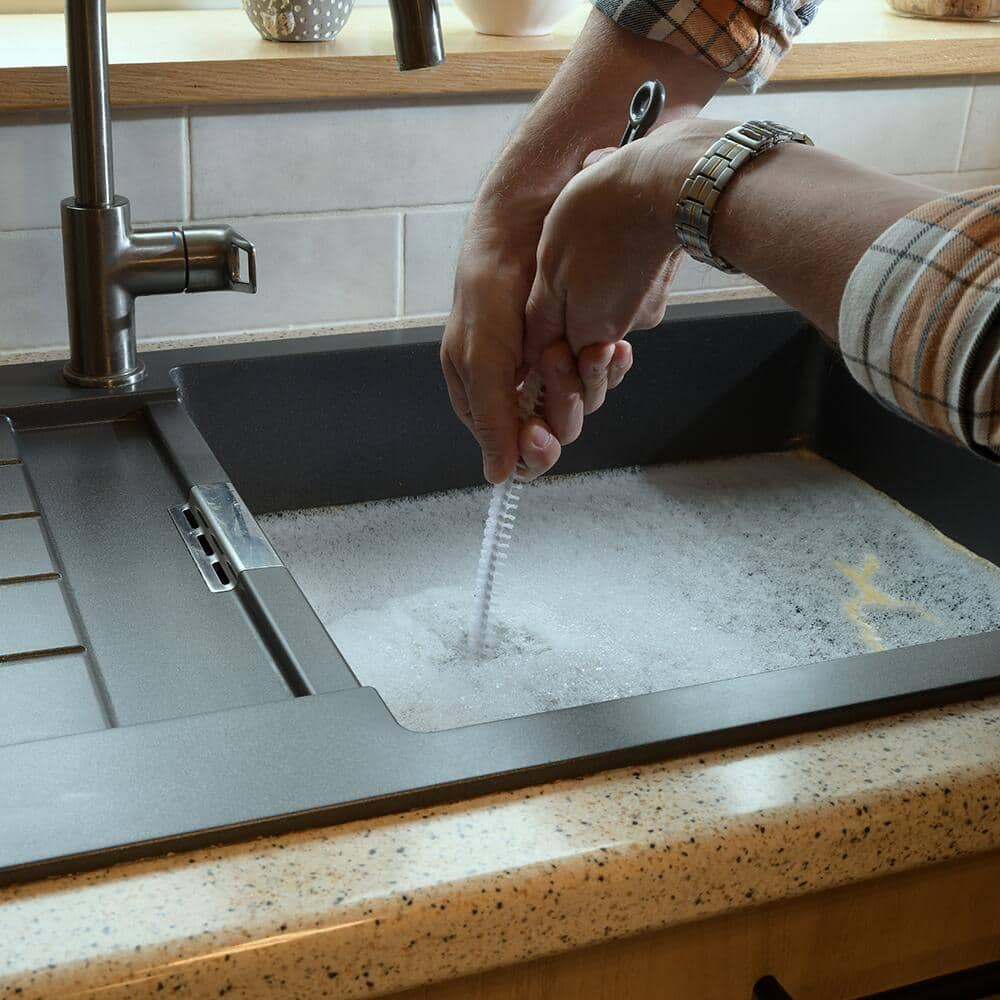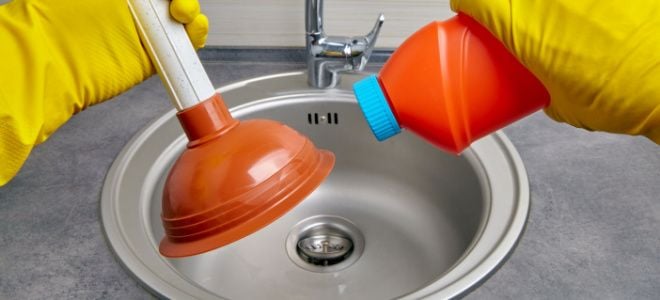Tips to Successfully Use Plunger and Drain Cleaners: Professional Advice
Tips to Successfully Use Plunger and Drain Cleaners: Professional Advice
Blog Article
We have come across this post relating to How to Unclog Your Sink with a Plunger down the page on the net and reckoned it made sense to discuss it with you on this page.

Introduction
Correct maintenance of family drains is crucial for avoiding obstructions and guaranteeing smooth water circulation. Among the key tools in every house owner's toolkit is the bettor, along with various drain cleaners created to take on persistent obstructions effectively. This short article checks out exactly how to utilize plungers and drain cleaners properly to keep your drains pipes flowing easily.
Area 1: Understanding Bettors
Types of Plungers
There are a number of sorts of plungers available, each created for various types of drains and blocks. One of the most common types include mug bettors, flange bettors, and accordion plungers.
Exactly How Plungers Work
Bettors service the concept of creating stress and suction to remove clogs. When properly used over a drain, they produce a vacuum that can pull out particles or break up clogs.
Choosing the Right Bettor
Selecting the ideal bettor depends upon the sort of drain and the nature of the blockage. Mug plungers are suitable for sinks and bathtubs, while flange plungers are better fit for commodes due to their design.
Typical Errors with Bettors
Staying clear of these mistakes makes certain effective plunging: inappropriate seal around the drain, inadequate pressure, and unclear surrounding particles.
Area 2: Using Plungers Efficiently
Prep work
Prior to diving, ensure the plunger covers the drainpipe entirely and creates a limited seal. Clear any type of noticeable debris around the drain opening.
Strategy
Start with mild diving motions to develop suction. Increase pressure progressively, making use of a stable rhythm. Repeat as needed until the drain removes.
Repairing Tips
If diving doesn't work, try changing the seal, using oil jelly for a much better seal, or using a different sort of plunger.
Area 3: Comprehending Drain Cleaning Company
Types of Drain Cleaners
Drain cleansers can be chemical or chemical. Chemical cleansers utilize strong chemicals to liquify clogs, while enzymatic cleaners utilize all-natural enzymes to break down raw material.
How Drain Cleansers Work
Chemical cleaners respond with blockages to liquify them, while chemical cleansers break down natural products like hair and grease without hurting pipes.
Security Considerations
Always wear gloves and eye defense when making use of chemical drainpipe cleansers. Guarantee appropriate air flow and follow producer directions meticulously.
Eco-Friendly Alternatives
Consider utilizing vinegar and baking soda or enzyme-based cleaners for green alternatives that are more secure for pipelines and the setting.
Section 4: Making Use Of Drain Cleaners Properly
Application Techniques
Pour chemical cleansers straight into the drain opening. Enable them to benefit the advised time before flushing with hot water. Chemical cleansers need to rest overnight.
Precautions
Prevent blending various types of cleaners, as this can generate poisonous fumes. Never use chemical cleansers in conjunction with a plunger, as splashing can take place.
Dealing With Persistent Obstructions
For persistent obstructions, consider using a plumbing serpent or calling a specialist plumber to prevent damages to pipelines.
Final thought
To conclude, comprehending how to use bettors and drain cleaners properly is crucial for keeping healthy pipes systems. By selecting the right tools and strategies, property owners can take on minor clogs and avoid major plumbing issues down the line.
How To Properly Use A Plumbing Snake To Clear Drains
When any drain clogs in our home arise, we tend to gravitate toward the plunger and little else. In cases where the plunger and its vacuum-created pressure are not able to clear clogs, many immediately move to harmful chemicals or simply call their plumber to fix the issue.
we’re happy to help with all drain cleaning needs and concerns. This includes informing you on a few other home remedies you may have at your disposal for minor to moderate clogs, one of which is the use of a plumbing snake. Many people have never used one of these before – let’s go over the steps to take when your drain clogs and you have a plumbing snake available.
Attempt Plunger Use
The first step here, as we noted above, should indeed be to grab your plunger when you notice a drain clog and attempt to resolve it this way. If you’re unsure how to use a particular type of plunger, our plumbers can answer any questions you have. If this doesn’t do the trick, however, you move on to the snake.
Locate And Prepare Snake
A plumbing snake is a metal or plastic device that’s generally about a quarter of an inch thick. It’s design with significant extensions, meant to reach down into your clogged drain and push the clog out. Snakes also contain drain augers that will latch onto and push stubborn blockages.
If your plunger doesn’t clear a clog, locate your snake and bring it to the drain in question. We also recommend keeping a bucket nearby to collect the clog once you pull it out, plus we’d advise wearing goggles and possibly protective gloves.
Feed Snake
Once you’re ready to go, feed the snake slowly down the drain, using the crank device it comes with to keep it moving until it finds the clog. Once this happens, much of the clog will be latched onto the coil so you can pull it out, while the rest will simply break up and flow downward.
Detach Debris
Remove the snake slowly from the drain, and once you’ve done so, pick off any debris that’s stuck to the coil. This is another area where wearing gloves is a must.
Flush Drain
Finally, take a few minutes to ensure the snake has done its job correctly. If you’ve been using it on a toilet, flush the toilet a couple times and make sure everything flows well. If you’ve used it on a different drain, flush it with some room temperature water.
https://www.mybuddytheplumber.com/blog/how-to-properly-use-a-plumbing-snake-to-clear-drains/

Application Techniques
Pour chemical cleansers straight into the drain opening. Enable them to benefit the advised time before flushing with hot water. Chemical cleansers need to rest overnight.
Precautions
Prevent blending various types of cleaners, as this can generate poisonous fumes. Never use chemical cleansers in conjunction with a plunger, as splashing can take place.
Dealing With Persistent Obstructions
For persistent obstructions, consider using a plumbing serpent or calling a specialist plumber to prevent damages to pipelines.
Final thought
To conclude, comprehending how to use bettors and drain cleaners properly is crucial for keeping healthy pipes systems. By selecting the right tools and strategies, property owners can take on minor clogs and avoid major plumbing issues down the line.
How To Properly Use A Plumbing Snake To Clear Drains
When any drain clogs in our home arise, we tend to gravitate toward the plunger and little else. In cases where the plunger and its vacuum-created pressure are not able to clear clogs, many immediately move to harmful chemicals or simply call their plumber to fix the issue.
we’re happy to help with all drain cleaning needs and concerns. This includes informing you on a few other home remedies you may have at your disposal for minor to moderate clogs, one of which is the use of a plumbing snake. Many people have never used one of these before – let’s go over the steps to take when your drain clogs and you have a plumbing snake available.
Attempt Plunger Use
The first step here, as we noted above, should indeed be to grab your plunger when you notice a drain clog and attempt to resolve it this way. If you’re unsure how to use a particular type of plunger, our plumbers can answer any questions you have. If this doesn’t do the trick, however, you move on to the snake.
Locate And Prepare Snake
A plumbing snake is a metal or plastic device that’s generally about a quarter of an inch thick. It’s design with significant extensions, meant to reach down into your clogged drain and push the clog out. Snakes also contain drain augers that will latch onto and push stubborn blockages.
If your plunger doesn’t clear a clog, locate your snake and bring it to the drain in question. We also recommend keeping a bucket nearby to collect the clog once you pull it out, plus we’d advise wearing goggles and possibly protective gloves.
Feed Snake
Once you’re ready to go, feed the snake slowly down the drain, using the crank device it comes with to keep it moving until it finds the clog. Once this happens, much of the clog will be latched onto the coil so you can pull it out, while the rest will simply break up and flow downward.
Detach Debris
Remove the snake slowly from the drain, and once you’ve done so, pick off any debris that’s stuck to the coil. This is another area where wearing gloves is a must.
Flush Drain
Finally, take a few minutes to ensure the snake has done its job correctly. If you’ve been using it on a toilet, flush the toilet a couple times and make sure everything flows well. If you’ve used it on a different drain, flush it with some room temperature water.
https://www.mybuddytheplumber.com/blog/how-to-properly-use-a-plumbing-snake-to-clear-drains/

I recently found that entry on Tips on How to Effectively Use a Plunger when perusing the search engines. Those who appreciated our article kindly consider to share it. I appreciate reading our article about A Guide to Plungers (and How to Use Them).
Click Here Report this page